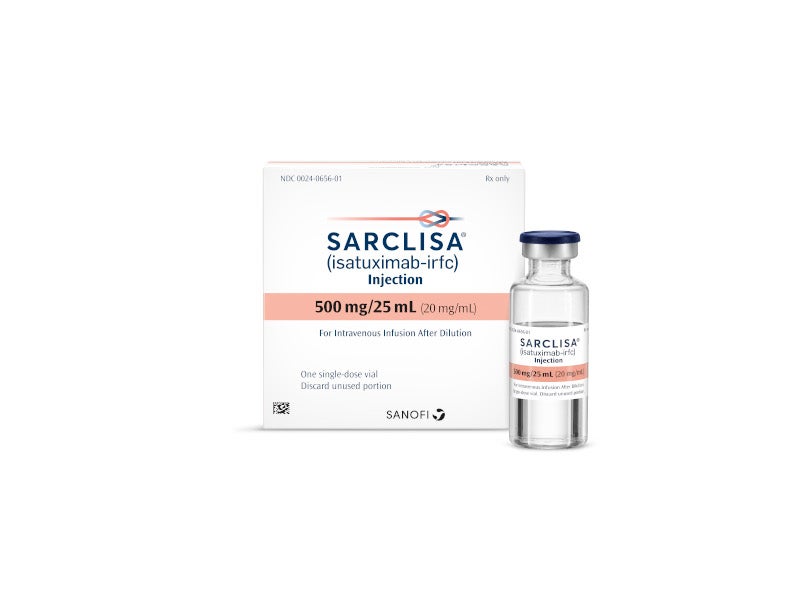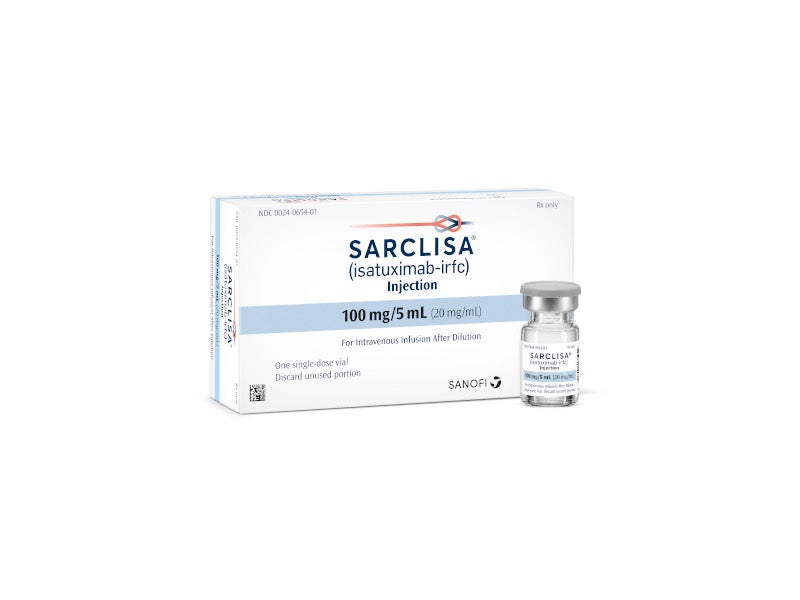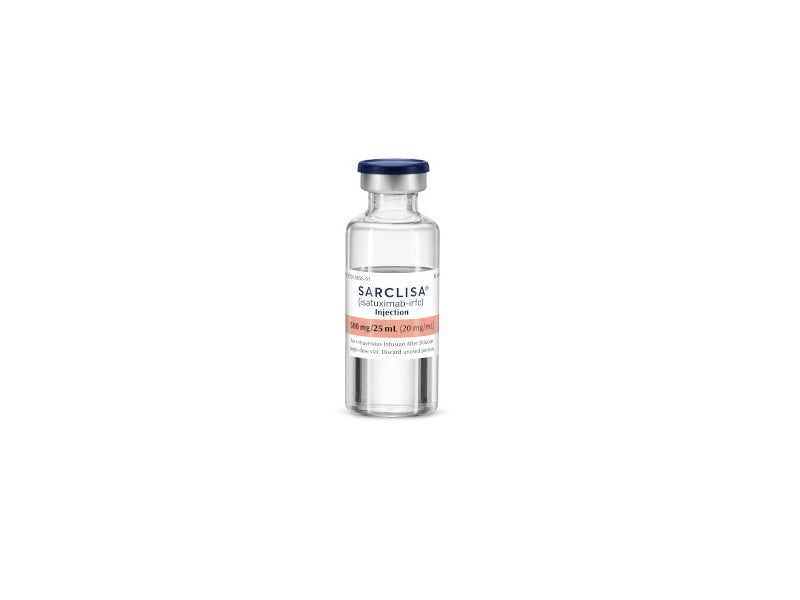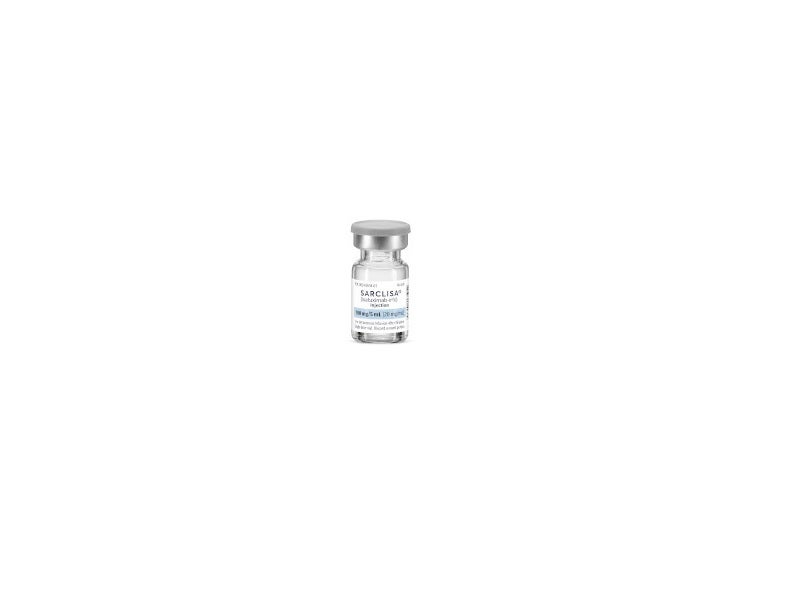Sarclisa® (isatuximab-irfc) is a monoclonal antibody in combination with pomalidomide and dexamethasone (pom-dex) indicated for the treatment of multiple myeloma.
Developed by Sanofi-Aventis, Sarclisa (isatuximab-irfc) received authorisation from the US Food and Drug Administration (FDA) in March 2020.
Biologics license application (BLA) for isatuximab-irfc to treat adults with relapsed refractory multiple myeloma (RRMM) received acceptance from the FDA for review in July 2019. Sarclisa (isatuximab-irfc) obtained orphan designation from the FDA and the European Medicines Agency (EMA) in the same month.
EMA reviewed the marketing authorization application (MAA) for Sarclisa (isatuximab-irfc) in combination with pom-dex in June 2019.
European Medicines Agency’s Committee for Medicinal Products for Human Use (CHMP) adopted a positive opinion for Sarclisa in combination with pom-dex for the treatment of adult patients with RRMM.
European Commission (EC) decision for commercial use of Sarclisa should take place in the coming months. The drug will be available to patients in the US later this year. Sarclisa will be available as an intravenous injection with the recommended dose of 20mg / ml.
Multiple myeloma causes and symptoms
Multiple myeloma, also referred to as myeloma of plasma cells, occurs in plasma cells, a type of white blood cell found in the bone marrow. It causes malignant plasma cells to accumulate in the bone marrow, resulting in cell proliferation.
Common symptoms of the disease are bone tenderness, fatigue, loss of appetite, shortness of breath, nausea, weight loss, constipation, frequent urination, bleeding gums and excessive thirst.
Sarclisa mechanism of action
Isatuximab-irfc is an IgG1-derived monoclonal antibody that selectively binds to the multiple myeloma cell receptor, CD38, and causes programmed tumour cell death (apoptosis).
It also activates the immunomodulatory effect such as antibody-dependent cellular phagocytosis (ADCP), complement-dependent cytotoxicity (CDC) and antibody-dependent cell-mediated cytotoxicity (ADCC).
Sarclisa is an anti-CD38 monoclonal antibody expressed on the haematopoietic or tumour cell surface receptors, making it a potential therapy for MM.
Isatuximab-irfc also inhibits the ADP-ribosyl cyclase activity of CD38. It can activate natural killer (NK) cells in the absence of CD38-positive target tumour cells and inhibits CD38-positive T-regulatory cells.
Isatuximab-irfc in combination with pomalidomide increases antibody-dependent cellular cytotoxicity (ADCC) activity and kills the tumour cells.
The drug combination increases the activity of isatuximab-irfc or pomalidomide alone in a xenograft model of human multiple myeloma.
Clinical trials on Sarclisa
FDA approval of Sarclisa in combination with pomalidomide and dexamethasone comes from the pivotal ICARIA-MM clinical trial.
ICARIA-MM is randomised, multicentre, open-label, two-arm and phase 3 study involving 307 patients.
Patients, at random (1:1), received either Sarclisa in combination with pomalidomide and low-dose dexamethasone (n=154) or pomalidomide and low-dose dexamethasone (n=153).
Both groups received treatment for 28-day cycles until progression of the disease or unacceptable toxicity. A dose of 10mg / kg was administered as an intravenous infusion weekly in the first cycle and every two weeks thereafter.
The dose of pomalidomide was 4mg orally once daily from day 1 to day 21 during each 28-day cycle. A 40mg dose of dexamethasone was given (20mg for patients above 75 years) orally or intravenously on days 1, 8, 15, and 22 during each 28-day cycle.
The primary endpoint was based on progression-free survival (PFS), the duration when a patient stays alive without progression of cancer, while the secondary endpoint was overall response rate (ORR).
Patients treated with Sarclisa in combination with pomalidomide and low-dose dexamethasone experienced a 40% reduction in the risk of disease progression or death when compared to patients who received pomalidomide and dexamethasone.
Patients who received Sarclisa in combination with pomalidomide and low-dose dexamethasone had an ORR of 60.4% versus the patients who only received pomalidomide and low-dose dexamethasone had ORR of 35.3%.
The most common adverse reactions observed in the patients during the trial were anaemia, lymphopenia, thrombocytopenia, neutropenia (96%), pneumonia (25.3%), diarrhoea, infusion-related reactions (39%) and upper respiratory tract infection (57%).











